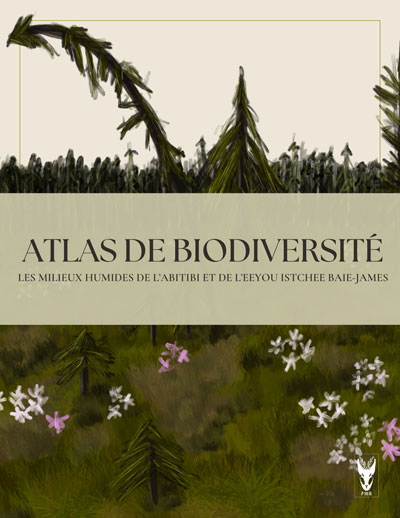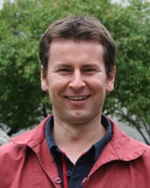
David Pinaud
Ancien postdoctorat
Diversité d’oiseaux et de micromammifères le long de gradients de succession après coupes
Chaire de recherche industrielle CRSNG–Université Laval en sylviculture et faune
Département de biologie - Pavillon Vachon
Université Laval - Québec (Qc)
G1K 7P4 - CANADA
(418) 656 2131 poste 12004
Directeur: Fortin Daniel
FORMATION
Doctorat en Sciences du Vivant (2001 - 2005). Université Louis Pasteur Strasbourg I.
Sujet: "Relations entre les variations spatio-temporelles de l’environnement et les processus d’acquisition et d’allocation des ressources chez les Procellariiformes".
Directeur: Dr. H. Weimerskirch, Centre d'Études Biologiques de Chizé, France.
Diplôme d`Études Approfondies en Écologie, Éco-Physiologie et Comportement (2001). Université Louis Pasteur Strasbourg I.
Sujet: "Facteurs ultimes et proximaux affectant les performances reproductrices de l’Albatros à sourcils noirs".
Directeur: Dr. H. Weimerskirch, Centre d'Études Biologiques de Chizé, France.
Maîtrise de biologie des populations et écosystèmes (1998). Université Rennes I.
Sujet: "Écologie de l’approvisionnement du Busard cendré dans un paysage agricole intensif en utilisant la méthode de radio-tracking : implications pour la conservation".
Directeur: Dr. V. Bretagnolle, Centre d'Études Biologiques de Chizé, France.
PRÉSENTATION DU PROJET
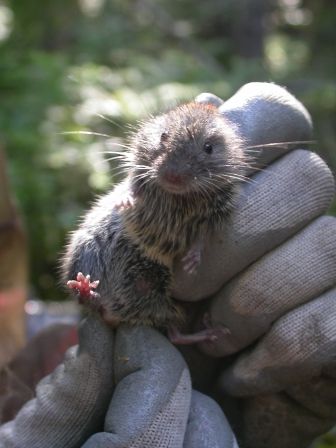 Ma recherche porte principalement sur l’étude de la diversité et de l’abondance des oiseaux et des micromammifères le long de gradients de succession après coupes, dans le cadre de la Chaire de recherche industrielle CRSNG–Université Laval en sylviculture et faune. Mes travaux visent à comprendre comment les oiseaux et les micromammifères (deux groupes fauniques qui sont fortement influencés par la structure des peuplements) réagissent sur le long terme après les coupes dans la pessière à mousse de l’Est, puis à essayer d’identifier les attributs forestiers impliqués.
Ma recherche porte principalement sur l’étude de la diversité et de l’abondance des oiseaux et des micromammifères le long de gradients de succession après coupes, dans le cadre de la Chaire de recherche industrielle CRSNG–Université Laval en sylviculture et faune. Mes travaux visent à comprendre comment les oiseaux et les micromammifères (deux groupes fauniques qui sont fortement influencés par la structure des peuplements) réagissent sur le long terme après les coupes dans la pessière à mousse de l’Est, puis à essayer d’identifier les attributs forestiers impliqués.
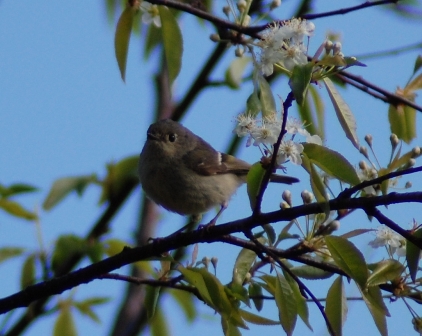
Le terrain s’effectue sur la Côte Nord à l`été 2007. Les populations d’oiseaux sont estimées sur des points d’écoute et celles des micromammifères à l’aide de quadrats de trappes-pièges Sherman, et sur chaque relevé sont aussi échantillonnés les caractéristiques du peuplement.
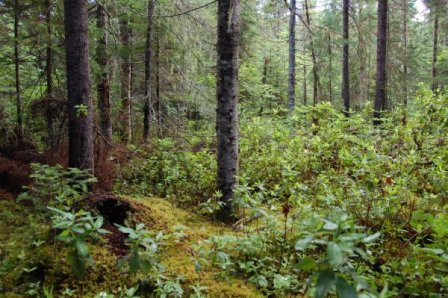 Travaillant dans le laboratoire de Daniel Fortin au département de Biologie à l’Université Laval, je remplie aussi un rôle de conseil en statistiques et analyses spatiales en aidant les étudiants du groupe, principalement dans le domaine des relations entre l’animal et son milieu. Mes compétences vont des analyses de processus ponctuels aux mouvements animaux (balise Argos, GPS…) et à la simulation. Je maîtrise entre autres les logiciels R, ArcView et ArcGIS.
Travaillant dans le laboratoire de Daniel Fortin au département de Biologie à l’Université Laval, je remplie aussi un rôle de conseil en statistiques et analyses spatiales en aidant les étudiants du groupe, principalement dans le domaine des relations entre l’animal et son milieu. Mes compétences vont des analyses de processus ponctuels aux mouvements animaux (balise Argos, GPS…) et à la simulation. Je maîtrise entre autres les logiciels R, ArcView et ArcGIS.
PUBLICATIONS
Publications dans des revues internationales avec comité de lecture
- Weimerskirch, H., Bost, C.-A., Pawlowski, F. & Pinaud, D. sous presse. Does prey capture induce area-restricted search? a fine scale study using GPS in a marine predator. American Naturalist.
- Pinaud, D. sous presse. Quantifying search effort of moving animals at several spatial scales using First-Passage Time analysis: effect of the structure of environment and tracking system. Journal of Applied Ecology
- Pinaud, D. & Weimerskirch, H. 2007. At-sea distribution and scale-dependent foraging behaviour of petrels and albatrosses: a comparative study. Journal of Animal Ecology 76:9-19
- Weimerskirch, H., Akesson, S. & Pinaud, D. 2006. The dispersal behaviour of juvenile wandering albatrosses. Journal of Avian Biology 37:23-28.
- Pinaud, D., Cherel, Y. & Weimerskirch, H. 2005. Effect of environmental variability on habitat selection, diet and provisioning behaviour of Yellow-nosed Albatross and consequence on chick. Marine Ecology Progress Series 298:295-304.
- Pinaud, D. & Weimerskirch, H. 2005. Scale-dependent habitat use in a long-ranging central place predator. Journal of Animal Ecology 74: 852–863.
- Bonadonna F., Chamaillé-Jammes S., Pinaud D. & Weimerskirch, H. 2003. Magnetic cues: are they important in Black-browed Albatross Diomedea melanophris orientation? Ibis, 145, (1), 152-155.
- Pinaud, D. & Weimerskirch, H. 2002. Ultimate and proximate factors affecting the breeding performance of a marine top-predator. Oikos, 99, 141-150.
Soumis
- Le Corre, M., Pellerin, M., Saïd, S., & Pinaud, D. A multi-patch use of the habitat: testing the First-Passage Time analysis on roe deer paths. Wildlife Biology.
- Bailleul, F., Pinaud, D., Charrassin, J.-B. Hindell, M. & Guinet, C. Scale-dependent foraging behaviour of the Southern elephant seal (Mirounga Leonina): an approach in depth using First Passage Time derived. Journal of Animal Ecology.
En préparation
- Weimerskirch, H., Bost, C.-A., Grémillet, D. & Pinaud, D. Scale-dependent foraging movements of seabirds : a global comparison.
- Pinaud, D., Fortin, D. & Ruel, J.-C. Long-term effect of logging on passerine and small mammals communities : a two-scale approach.
- Brischoux, F., Bonnet, X., Pinaud, D. & Shine, R. Site fidelity and foraging range in sea snakes Laticauda sp.: implications for conservation.
Présentations à des conférences internationales avec comité de lecture
Communications orales
- Pinaud, D. & Weimerskirch, H. 2005. A comparative approach of scale-dependent foraging movements of albatrosses. The 5th Conference of the European Ornithologists' Union, 20- 23 August 2005, Strasbourg, France.
- Le Bohec, C., Visagie, J., van der Lingen, C., Ryan, P., Pinaud, D. & Grémillet, D. 2005. Linking foraging hot spots of African Penguin Spheniscus demersus with the distribution of pelagic prey in the Benguela. The 5th Conference of the European Ornithologists' Union, 20- 23 August 2005, Strasbourg, France.
- Pinaud, D. & Weimerskirch, H. 2005. Using First-Passage Time analysis to assess the search scales of satellite-tracked seabirds. Biologging II, 13 - 17 June 2005, St Andrews, Scotland.
- Pinaud, D. & Weimerskirch, H. 2004. Using First-Passage Time analysis to assess the scales of interaction with marine environment. Third International Albatross and Petrel Conference, 23 - 27 August 2004, Montevideo, Uruguay.
- Weimerskirch, H., Akesson, S. & Pinaud, D. 2004. The dispersal behaviour of juvenile wandering albatrosses. Third International Albatross and Petrel Conference, 23 - 27 August 2004, Montevideo, Uruguay.
- Pinaud, D. & Weimerskirch, H. 2004. Effect of environmental variability on provisioning behaviour of Yellow-nosed Albatross and consequence on chick growth. Easter meeting of the Association for the Study of Animal Behaviour, 31 March – 2 April 2004, Brighton, UK.
- Salamolard, M., Arroyo, B., Duriez, O., Pinaud, D. & Bretagnolle, V. 1996. Foraging ecology of a semi-colonial raptor, Montagu's harrier (Circus pygargus). International Conference on Raptors, October 1996, Urbino (Italy).
Communication invitée
- Pinaud, D. 2006. Understanding how resources are acquired and allocated to reproduction: satellite-tracking and foraging strategies of seabirds. 8th March 2006, National Institute of Polar Research, Tokyo, Japan.
Posters
- Pinaud, D. 2006. Quantifying search effort of moving animals at several spatial scales using First-Passage Time analysis: effect of the structure of environment and tracking system. 11th International Behavioral Ecology Congress, July 23-28, 2006, Tours, France.
- Pinaud, D. & Weimerskirch, H. 2005. Using First-Passage Time analysis to assess the search scales of satellite-tracked seabirds. Meeting "Ecology and Behaviour, 16-18 March 2005, Chizé, France.
- Pinaud, D. & Weimerskirch, H. 2004. Using First-Passage Time analysis to assess the scales of interaction with marine environment. Meeting of the European Seabird Group, 2 - 4 April 2004, Aberdeen, Scotland.









